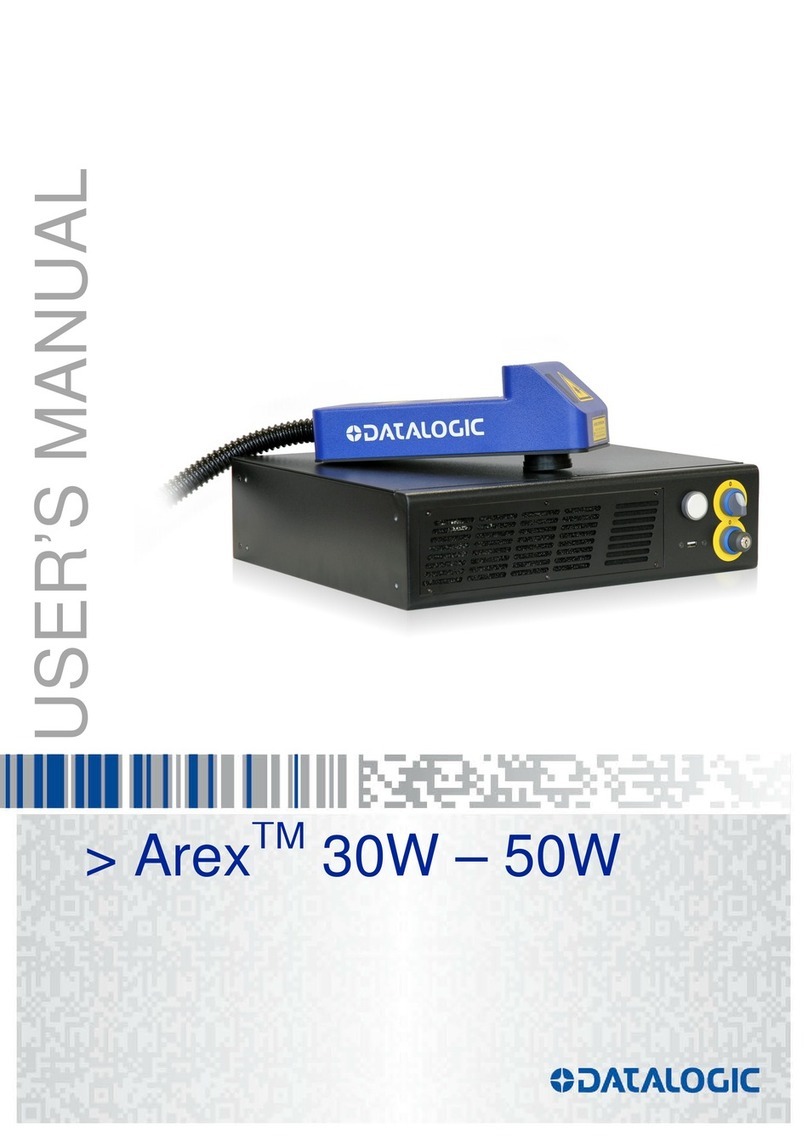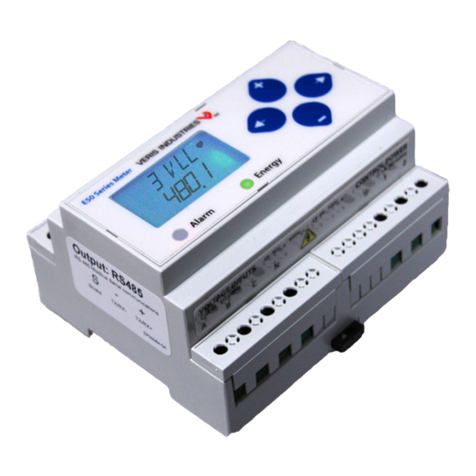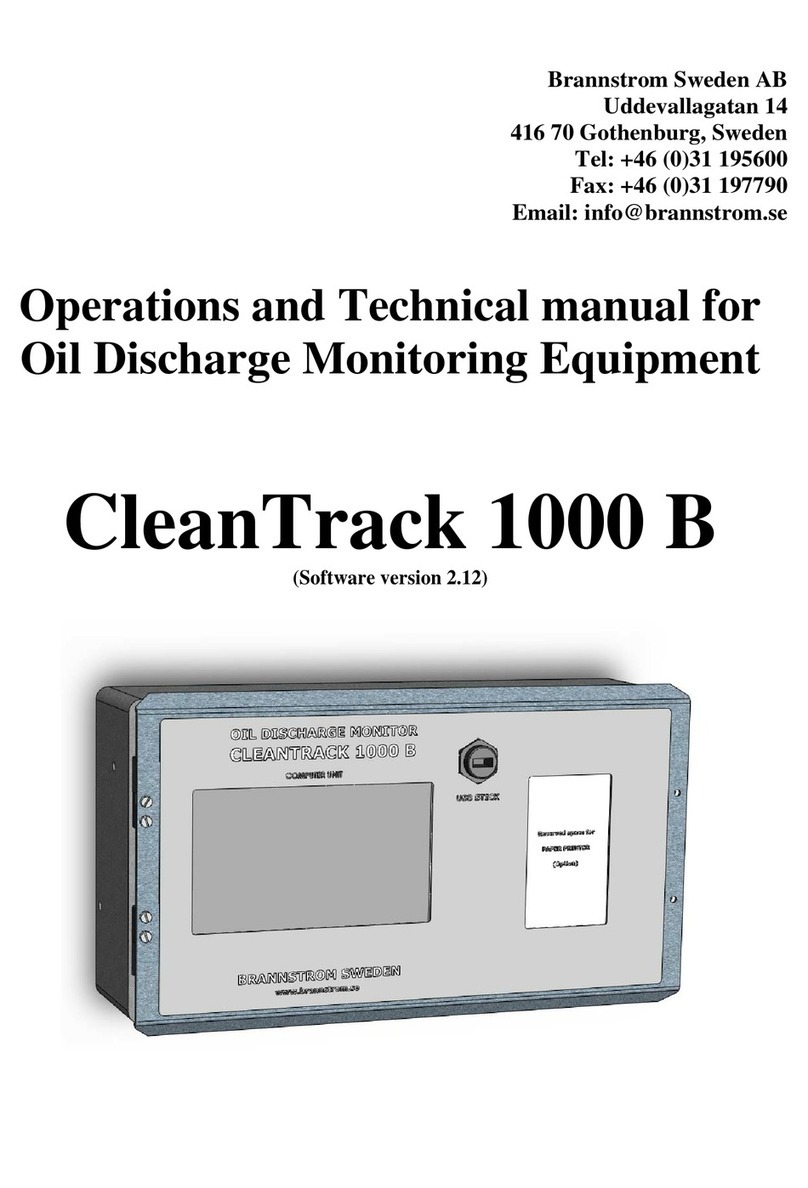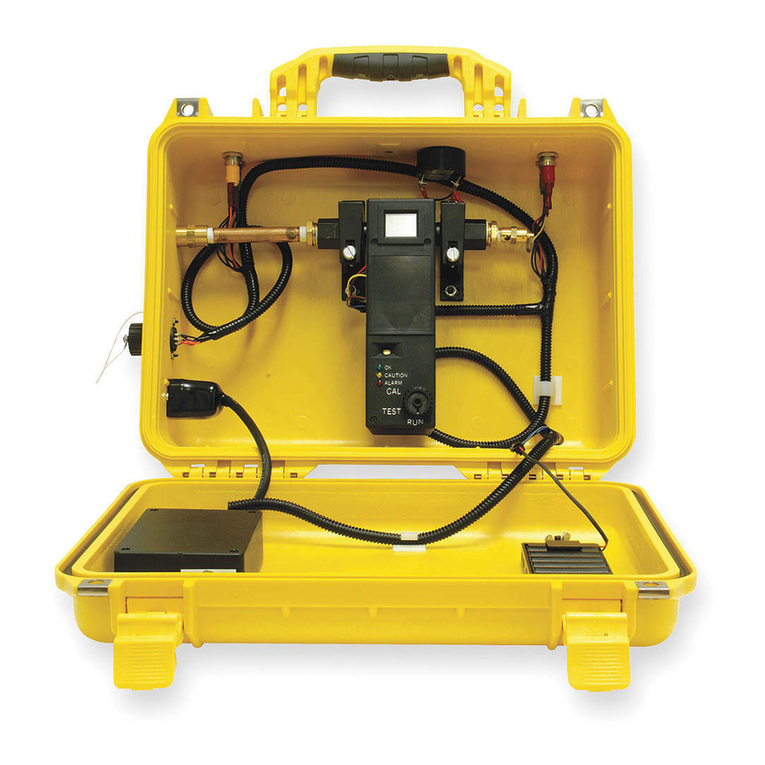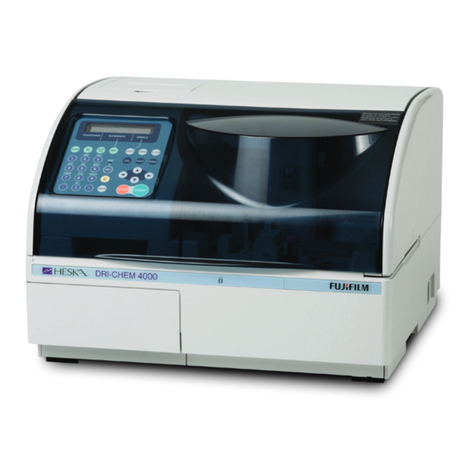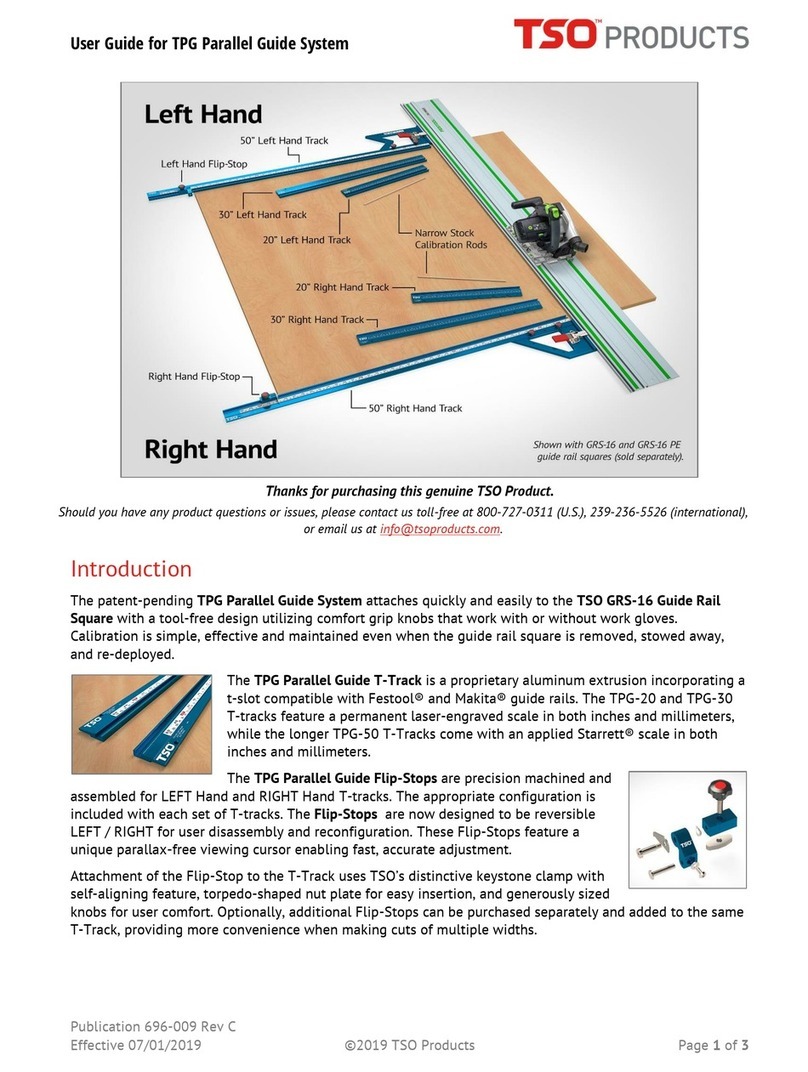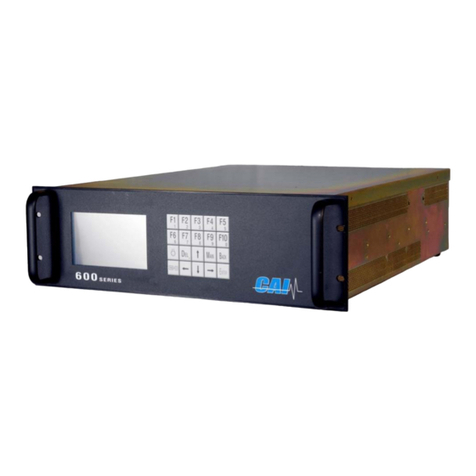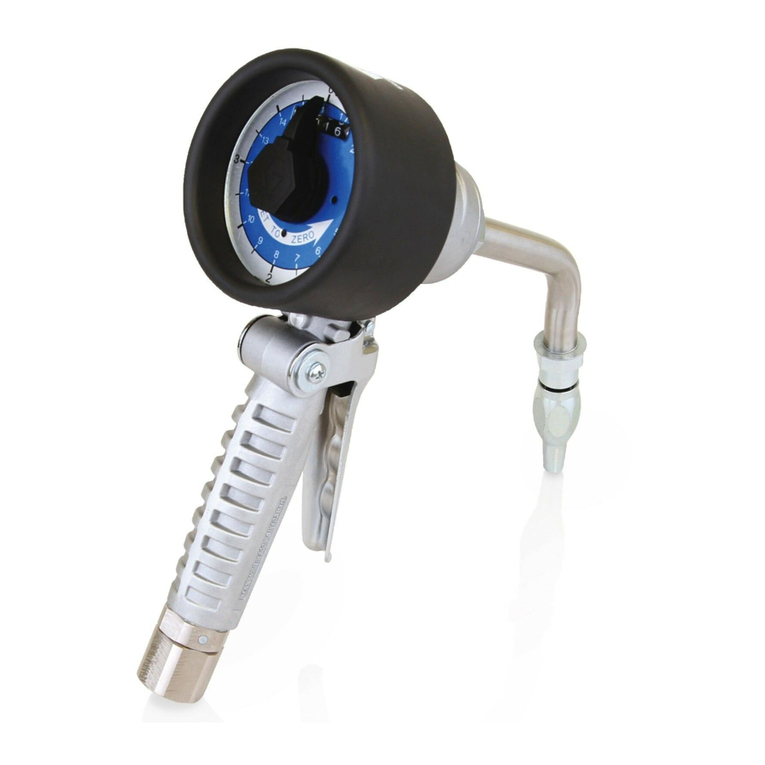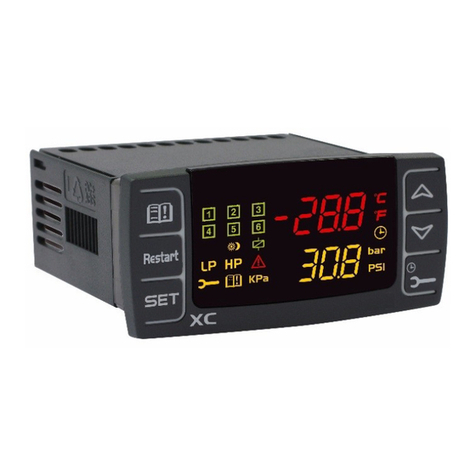GEORGE FISCHER +GF+ SIGNET 9020 Intelek-Pro User manual

BATCH CONTROLLER
GPM
RLY 1
RLY 2
ENTER MOD FLOW
CAL START STOP
GAL
BATCH
RESUME
+GF+SIGNET
Instruction Manual
Batch Controller
+GF+SIGNET 9020 Intelek-Pro
GEORGE FISCHER +GF+


+GF+SIGNET 9020 Intelek-Pro
Batch Controller
Instruction Manual

Caution: Remove AC power to unit prior to wiring
input and output connections.
Caution: Remove AC power before opening unit.
Electrical shock hazard exists.
Important Safety Information!

Chapter Page
1 Introduction 1
1.1 General Description 1
1.2 Standard Inputs 1
1.3 Standard Outputs 1
1.4 Optional Accessories 1
1.5 Front Panel Description 2
1.6 Rear Panel Description 3
2 Installation and Operation 4
2.1 Mounting Instructions 4
2.2 Power Connections 5
2.3 Input Connections 6
2.4 Output Relay Connections 7
2.5 Standard Output Connections 9
2.6 Optional Output Connections 9
3 System Configuration 12
3.1 Introduction 12
3.2 CAL Menu Functions 13
3.3 BATCH Menu Functions 14
3.4 Standard Keypad Sequence 16
3.5 CAL Menu 17
3.6 Auto Cal/Overrun Compensation 19
3.7 BATCH Menu 21
3.8 View Only Menu 23
4 Technical Support 25
4.1 Accessing Internal Options 25
4.2 AC Power Configurations 26
4.3 Security Code Function 26
4.4 Input Card Configuration 27
4.5 Installing Input/Output Cards 28
4.6 Options and Accessories 28
4.7 Troubleshooting 29
Specifications 33
Table of
Contents

Unpacking and Inspection
Your batch controller package includes the
following items:
•+GF+SIGNET 9020 Intelek-Pro Batch
Controller
• Two stainless steel mounting brackets
• Mounting Instructions w/self-adhesive
template
• Panel gasket
• Instruction manual and assorted engineering
labels (see inner rear cover)
Warranty Record
For your protection, record your unit's purchase
information for future reference. The serial number
decal is located on the instrument's rear panel.
Model: +GF+SIGNET 9020 Intelek-Pro
Batch Controller
Purchase Date: ________________________
Serial Number: _________________________
Purchased From: ________________________
Purchase Order Number: ________________

Chapter 1
Introduction
This manual contains description, setup, and
operation instructions for the +GF+SIGNET 9020
Intelek-Pro Batch Controller. Please read the entire
manual before operating the instrument.
1.1 General Description
• The 9020 operates on AC and/or DC power.
DC power can be used for emergency backup
or independently as the primary power source.
• The 9020 enclosure is standard 1/4 DIN size,
96 x 96 mm. The front panel is NEMA 4X/
IP65 rated.
1.2 Standard Inputs
The +GF+SIGNET 9020 Intelek-Pro Batch
Controller is fully compatible with all +GF+Signet
flow sensors. This controller accepts pulse/sine-
wave frequency signals only.
1.3 Standard Outputs
• Two SPDT 5 A relays provide external device
control.
• The sensor pulse output (PLS OUT) delivers a
5 V square wave in phase with the sensor
input. It can be used to drive other Signet
instruments or compatible devices.
1.4 Optional Accessories
• The remote (SSR) card provides remote start/
stop/resume capability (sec. 2.6). This option
includes an end-of-batch and counter pulse
output. These open collector outputs are ideal
for driving external counters or accumulators.
• A NEMA 4X/IP65 rear cover assembly is
offered for maximum environmental protection
(sec. 4.6).
The technical data given in
this publication is for general
information purposes only. It
implies no warranty of any
kind.
1

• Stores a menu item into memory after modification
• Displays available output options while batch cycle is stopped (only)
1.5 Front Panel Description
Item 11:
Remove front bezel
to change unit tags
under clear window.
The unit tags are
located inside the
rear cover of the
manual.
ENTER
CAL
2. LCD
Displays:
4.
5.
1. Annuncia-
tors: • Indicate activation status of output relays 1 & 2
• Indicates batch volume or flow rate shown on the main display
• Shows batch, flow rate, calibration, setup, and relay activation status
information
• Used in conjunction with MOD key to access the CAL menu
• Accesses the "view-only" menu during or after a batch cycle
ENTER MOD FLOW
CAL START STOP
RLY 1
RLY 2
+GF+SIGNET
BATCH CONTROLLER
GPM
BATCH
RESUME
3
5
6
4
1
7
8
9
10
11
BATCH
FLOW
2
GAL
STOP
7.
START
6. • Starts the batching cycle and energizes relays 1 and relay 2
• Stops batch cycle in progress
• De-energizes any active relay
8. • Resumes a previously stopped batch cycle
• Decreases the value of a selected digit in CAL or BATCH menus
RESUME
9.
BATCH
• Selects batch display during normal operation
• Used in conjunction with the MOD key to access the BATCH menu
• Increases the value of a selected digit in CAL or BATCH menu
10.
MOD
3. • Accesses one of two menus: CAL or BATCH
• Selects a menu item for modification
• Restores a menu item to original value after modification
FLOW
• Selects flow rate display during normal operation
• Selects a digit for modification in CAL or BATCH menus
2
Operational Function
Item

1.6 Rear Panel Description
3
Note:
Rear terminals
accept 18 to 22 AWG
wire
• Relay #1 (COM, NO, NC) contact set for external device
control 3. RLY 1
4. RLY 2
• Relay #2 (COM, NO, NC) contact set for external device
control
6. PLS OUT
• PLS OUT delivers a 5 V square wave in phase with the
sensor input frequency (standard)
Item
• RTN: Isolated ground
• STR is the terminal to the remote start switch
• STP is the terminal to the remote stop switch
• RSM is the terminal to the remote resume switch
• EOB: 130 ms (nominal) open collector pulse at the
completion of each batch cycle
• CNT: 130 ms (nominal) open collector pulse for each
engineering unit measured
8. REMOTE
These six terminals are only
used when the optional
start/stop/resume card
(3-9020.450) is installed.
7. SERIAL
• Serial outputs (future availability)
876 5
12
34
1 2 3 4 5 6 7 8 9 10 11 12 13 14
15 16 17 18 19 20 21 22 23 24 25 26 27 28
RTNSTR STP RSM
REMOTE
EOB CNT
SERIAL
Tx GND Rx
PLS OUT
+ -
BLK RED SHLD
SENSOR
L1N
AC IN
+ GND NO C NC
RLY1DC IN
NO C NC
RLY2
•17 to 30 VDC power connection 2. DC IN
5. SENSOR
•Flow sensor/frequency input
•90 to 132 VAC or 180 to 264 VAC power connection
(jumper selectable) 1. AC IN
Operational Function

Chapter 2
Installation
and
Operation
4
2.1 Mounting Instructions
The Intelek-Pro 1/4 DIN enclosure is designed for
mounting in panels up to 1 in./25 mm thick. An
adhesive template and instructions are included to
insure proper installation.
For maximum environmental protection the splash-
proof NEMA 4X/IP65 rear cover kit is recom-
mended (sec. 4.6).
Figure 1
External dimensions
Panel cutout instructions
Recommended panel cutout 3.54 in./90 mm square. Maximum panel cutout 3.62 in./
92 mm square, DO NOT EXCEED. Use adhesive backed template (included)
5.7 in./145 mm
6 in./152 mm
7.2 in./183 mm
0.5 in./13 mm
Mounting Clamp (2 ea.)
*Optional NEMA 4X/IP65 Rear Cover
3.8 in. sq.
96 mm 3.5 in.
88 mm
Mounting Panel
Max. panel thickness = 1 in./25 mm
Panel
Gasket
SIDE VIEW

5
2.2 Power Connections
AC Power Connections
Instructions
1. Jumper selectable for 90 to 132 OR 180 to 264 VAC
operation. Confirm AC power configuration before
applying power, see section 4.2.
2. *A direct or low impedance AC ground (earth ground)
MUST be used for proper operation.
Note:
To reduce the possibility of noise interference,
AC power lines must be isolated from signal lines.
DC Power Connections
15 16 17 18 19 20 21 22 23 24 25 26 27 28
L
1
N
AC IN
+ GND NO C NC
RLY1DC IN
NO C NC
RLY2
90 to 132 VAC @ 60 Hz
OR
180 to 264 VAC @ 50Hz
AC Hot
AC Ground*
AC Neutral
L
1
N
AC IN
+ GND NO C NC
RLY1DC IN
NO C NC
RLY2
17 to 30 VDC @ 0.5 A
GND
15 16 17 18 19 20 21 22 23 24 25 26 27 28
*
Figure 3
DC power wiring
Figure 2
AC power wiring
Caution:
Never connect
live AC lines to the instrument.
Electrical shock hazard exists
Caution:
Never connect
live DC lines to the instrument
or damage to the instrument
may occur.
Note:
AC/DC power can be connected simultaneously,
using DC power as an uninterrupted power source.
*A direct or low impedance earth ground MUST be used
for optimum performance.

6
2.3 Input Connections
The 9020 input card accepts input signals ranging
from 0 to 10 kHz and is compatible with ALL
Signet flow sensor products. Dip switches on the
card are factory preset for use with the +GF+
SIGNET 515 Rotor-X Flow Sensor. Refer to
section 4.4 for dip switch configuration options.
Figure 4
Input Wiring
Note:
To reduce the possibility of noise interference,
separate signal lines from AC power lines.
CAUTION: Remove instrument power prior to
making any input/output connections. Failure to
do so may result in personal injury or damage
to the instrument.
1 2 3 4 5 6 7 8 9 10 11 12 13 14
RTNSTR STP RSM
REMOTE
EOB CNT
SERIAL
Tx GND Rx
PLS OUT
+ -
BLK RED SHLD
SENSOR
+GF+Signet flow
sensor inputs
Non-Signet inputs:
SHIELD
RED
BLACK
FREQUENCY
RETURN
OR
0.2 Vp-p min.,
0 to 3 KHz
0.6 Vp-p min.,
3 to 10 KHz

7
2.4 Output Relay Connections
Two 5 A output relays are available in the 9020.
Relay 1 is dedicated to on/off control. It is
energized at the start of a batch and de-energized
at the end of a batch. The relay also de-energizes
when the STOP key is pressed, and re-energizes
when the RESUME key is pressed.
Figure 5
Basic on/off relay
connections
Relay 2 can be assigned two operating modes
through the Batch menu (see sec. 3.7).
Two-stage shutdown is designed to prevent
overfilling in tank applications. Relay 2 is ener-
gized at the start of a batch and de-energized
when a selected percentage of the batch is com-
plete. The STOP and RESUME keys will also
control relay 2 (Figure 6).
15 16 17 18 19 20 21 22 23 24 25 26 27 28
L
1
N
AC IN
+ GND NO C NC
RLY1DC IN
NO C NC
RLY2
external
AC/DC
power
+
-
flow +-
valve
Note:
Relay contacts are rated 5 A @ 250 VAC or
5 A @ 30 VDC maximum.
Note:
to reduce the
possibility of noise interfer-
ence, separate AC relay lines
from input/output lines.

8
Note:
Relay contacts are rated 5 A @ 250 VAC or
5 A @ 30 VDC maximum.
15 16 17 18 19 20 21 22 23 24 25 26 27 28
L
1
N
AC IN
+ GND NO C NC
RLY1DC IN
NO C NC
RLY2
external
AC/DC
power
alarm
device
+
-
flow +-
-
+
valve
Batch overrun provides alarm capability if flow is
detected while no batch is running. Relay 2 is
de-energized during the batch cycle and ener-
gized if a preset volume is detected after the batch
cycle ends (Figure 7).
15 16 17 18 19 20 21 22 23 24 25 26 27 28
L
1
N
AC IN
+ GND NO C NC
RLY1DC IN
NO C NC
RLY2
flow to tank
external
AC/DC
power
+
+
-
+
-
valve 1
valve 2
-
Note:
Relay contacts are rated 5 A @ 250 VAC or
5 A @ 30 VDC maximum.
Figure 6
Two stage relay
connections
Figure 7
Overrun alarm relay
connections
Note:
to reduce the
possibility of noise interfer-
ence, separate AC relay lines
from input/output lines.
Note:
to reduce the
possibility of noise interfer-
ence, separate AC relay lines
from input/output lines.

9
2.5 Standard Output Connections
The sensor pulse output (PLS OUT) delivers a 5 V
square wave output in phase with the input
frequency. It can be used to drive +GF+Signet
instruments (except +GF+SIGNET 5090, 5091
and 5100) and other TTL compatible devices
(Figure 8).
Note:
To reduce the possibility of noise interference,
separate output lines from AC power lines.
Minimum load resistance: 10 K
Ω
Red (2)
Shld (3)
SIGNET
indicator or
controller OR
Other
indicator or
controller
Input
Gnd
1 2 3 4 5 6 7 8 9 10 11 12 13 14
RTNSTR STP RSM
REMOTE
EOB CNT
SERIAL
Tx GND Rx
PLS OUT
+ -
BLK RED SHLD
SENSOR
Figure 8
Sensor pulse output
(PLS OUT) connections
2.6 Optional Output Connections
The 9020 start, stop, and resume keys provide
control over a batching process. The optional
remote (SSR) card provides start/stop/resume
control via mechanical switch closures or active
low TTL pulses (125 ms min.) from a computer or
PLC (programmable logic controller), enabling
batch control from any location at the work site
(Figure 9). An open collector counter pulse output
and end-of-batch pulse output are also included
(Figures 10 and 11).

10
Figure 9
Optional remote control
connections
Start
Stop
Resume
computer/
PLC
OR
1 2 3 4 5 6 7 8 9 10 11 12 13 14
15 16 17 18 19 20 21 22 23 24 25 26 27 28
RTNSTR STP RSM
REMOTE
EOB CNT
SERIAL
Tx GND Rx
PLS OUT
+ -
BLK RED SHLD
SENSOR
L
1
N
AC IN
+ GND NO C NC
RLY1DC IN
NO C NC
RLY2
Note:
U
se a shielded cable and connect shield to the RTN ground terminal,
as shown.
Maximum cable lengths: 1000 ft/305 m maximum with 22 AWG wire,
2000 ft/610 m maximum with 18 AWG
The counter pulse output (CNT) is an open collector
130 ms pulse representing each engineering (flow)
unit measured. It is ideal for driving an external
accumulator. An external DC power supply and
current limiting resistor are required for opera-
tion (Figure 10).

11
Figure 10
Counter pulse output (CNT)
connections
RTNSTR STP RSM
REMOTE
EOB CNT
SERIAL
Tx GND Rx
PLS OUT
+ -
BLK RED SHLD
SENSOR
1 2 3 4 5 6 7 8 9 10 11 12 13 14
External
counter or
accumulator
IN
Gnd
600Ω @1.5W
5 to 30 VDC
Power Supply
+
Gnd
Max. current sinking capacity: 50 mA @ 30 VDC
Note:
To reduce the
possibility of noise interfer-
ence, separate output lines
from AC power lines.
Max. current sinking capacity: 50 mA @ 30 VDC
RTNSTR STP RSM
REMOTE
EOB CNT
SERIAL
Tx GND Rx
PLS OUT
+ -
BLK RED SHLD
SENSOR
1 2 3 4 5 6 7 8 9 10 11 12 13 14
External
counter or
accumulator
IN
Gnd
600Ω @1.5W 5 to 30 VDC
Power Supply
+
Gnd
Figure 11
End-of-batch (EOB) pulse
output connections
Note:
To reduce the
possibility of noise interfer-
ence, separate output lines
from AC power lines.
The end-of-batch pulse output (EOB) is an open
collector 130 ms pulse at the completion of every
batch. It is ideal for driving an external counter or
accumulator. An external DC power supply and
current limiting resistor are required for opera-
tion (Figure 11).

CAL Menu Functions Batch Menu Functions
1. K-factor 1. Batch size
2. K-factor decimal 2. Batch decimal
3. Flow display timebase 3. Batch mode: continuous or quantity
4. Flow display averaging 4. Batch quantity (number of batches)
5. Flow display decimal 5. Batch time delay (between batches)
6. Totalizer display mode: 6. Batch display mode: count up or down
flow volume or batch count 7. Displayed engineering units: actual or
7. Totalizer reset percent of batch
8. Totalizer multiplier 8. Relay mode: 2-stage mode or overrun
9. Display contrast alarm mode (see notes below)
10. Security code
11. Auto cal mode (see note below)
Auto cal options if selected 2-stage relay mode if selected
•Press start •Relay 2 setpoint
•Press stop
•Enter volume
•Volume decimal Overrun alarm relay mode if selected
•New K-factor •Overrun volume
•Batch compensation volume •Overrun decimal
Refer to sections 3.2 and 3.3 for detailed menu function descriptions.
12
3.1 Introduction
All the functions which can be modified are con-
tained in two setup menus:
The CAL menu contains those functions which
pertain to the sensor input frequency and how it is
interpreted by the instrument. The CAL menu also
provides access to the security code and display
contrast features.
The BATCH menu contains those functions which
pertain to the batching process and relay opera-
tion.
Chapter 3
System
Configuration
Figure 12
CAL/BATCH setup menu
functions

3.2 CAL Menu Functions
1. K-factor: Number of pulses generated by a
flow sensor per volumetric unit. K-factors are listed
in your flow sensor manual by pipe size and
material.
2. K-factor decimal: Changes the K-factor
decimal position.
3. Flow display timebase: Changes the time-
base used in the flow rate display. Timebase
modifications do not affect the batch display or
flow accumulator. The flow display decimal may
require adjustment for certain flow rates.
4. Flow display averaging: Averages the sensor
input frequency to compensate for turbulence
within the process pipe. High averaging values
will smooth erratic flow rates. Low averaging
values are used for stable flow rates.
5. Flow display decimal: Changes the flow
display decimal position. Decimal may require
adjustment to prevent display overflow when
certain K-factor/timebase values are used.
6. Totalizer display mode: Changes the
totalizer display. Select flow volume to read total
volume, or batch count to read number of batches
processed.
7. Totalizer reset: Resets totalizer to zero.
8. Totalizer multiplier: Multiplies the totalizer by
an user specified value (flow volume mode only).
Not shown in menu when batch count mode is
selected.
13
K-factor range:
0.0001 to 19999
K-factor decimal:
X.XXXX - 4, XX.XXX - 3,
XXX.XX - 2, XXXX.X - 1,
XXXXX - 0
Flow display timebase:
1= seconds
2= minutes
3= hours
4= days
Flow display averaging:
selectable from 1 to 10 s
Flow display decimal:
X.XXXX - 4, XX.XXX - 3,
XXX.XX - 2, XXXX.X - 1,
XXXXX - 0
Totalizer multiplier:
X 0.001, 0.01, 0.1, 1, 10,
100, 1000

14
9. Display contrast: Changes LCD contrast for
best visibility.
10. Security code selection: Changes the 4-digit
security code. When enabled, the security code
prevents unauthorized menu changes. Two security
levels are provided:
•Enter entire 4-digit code for complete access
•Enter two least significant digits for BATCH
menu access only.
The security function can be disabled by changing
an internal dip switch setting (sec. 4.3). When
disabled, the security function is removed from the
CAL menu.
11. Auto cal mode: Calculates a custom K-factor
based on volumetric measurement for more precise
dispensing. This process will compensate for
installation abnormalities or non-standard pipe
sizes, and allows the operator to compensate for
slow valve closure time or pipe run-off. Auto cal
requires an accurate measurement reference
container.
3.3 BATCH Menu Functions
1. Batch size: Changes the batch size. This
value represents the same engineering units as the
K-factor entry.
2. Batch decimal: Changes the batch size
decimal position.
3. Batch mode: Changes the batch mode. In
quantity mode, a user entered number of batches
are dispensed, separated by a user set time delay.
In continuous mode, operation is identical, except
that the process repeats until the STOP key is
pressed.
Batch decimal:
X.XXXX - 4, XX.XXX - 3,
XXX.XX - 2, XXXX.X - 1,
XXXXX - 0
Batch size:
.0001 to 19999
Security code selection:
0000 to 9999
X
XXX
= Full access
XXXX
= Batch menu access
only
Table of contents
Other GEORGE FISCHER Measuring Instrument manuals
Popular Measuring Instrument manuals by other brands
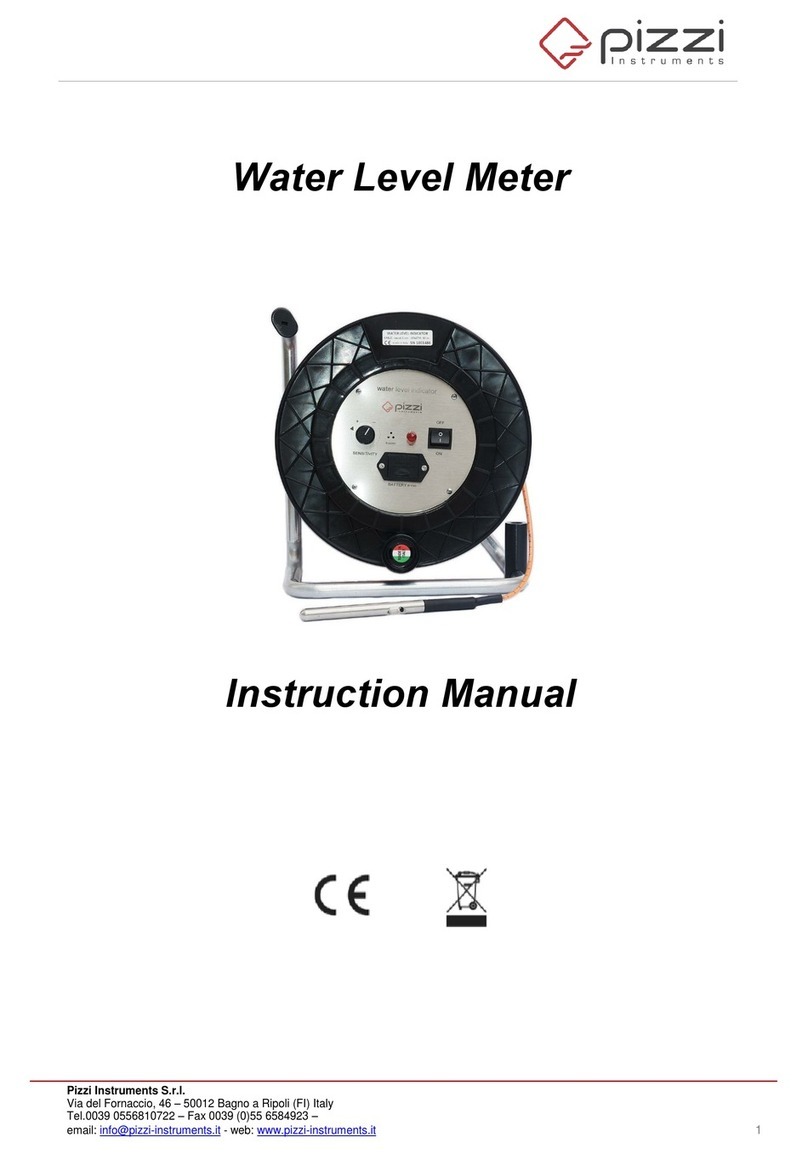
pizzi instruments
pizzi instruments Water Level Meter instruction manual
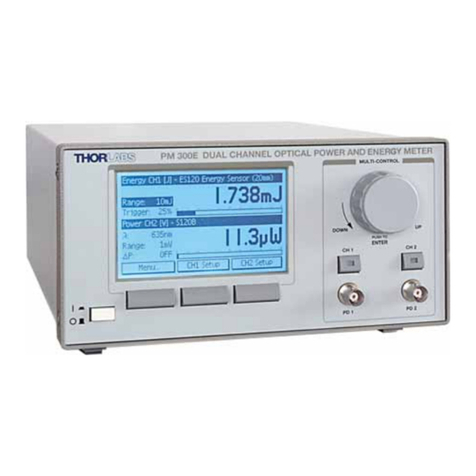
THORLABS
THORLABS PM300E Operation manual
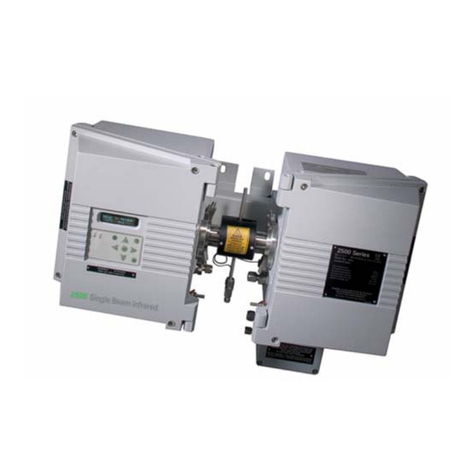
Servomex
Servomex SERVOTOUGH SpectraExact 2500 Series installation manual
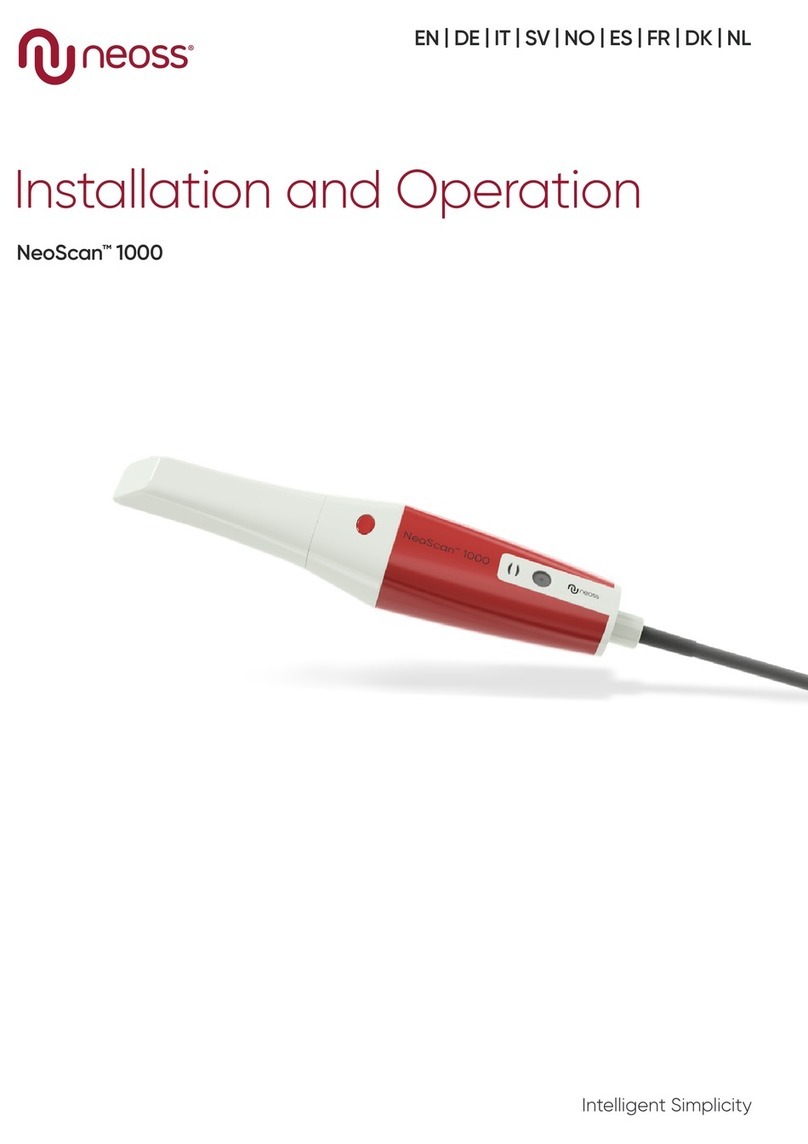
Neoss
Neoss NeoScan 1000 Installation and operation manual
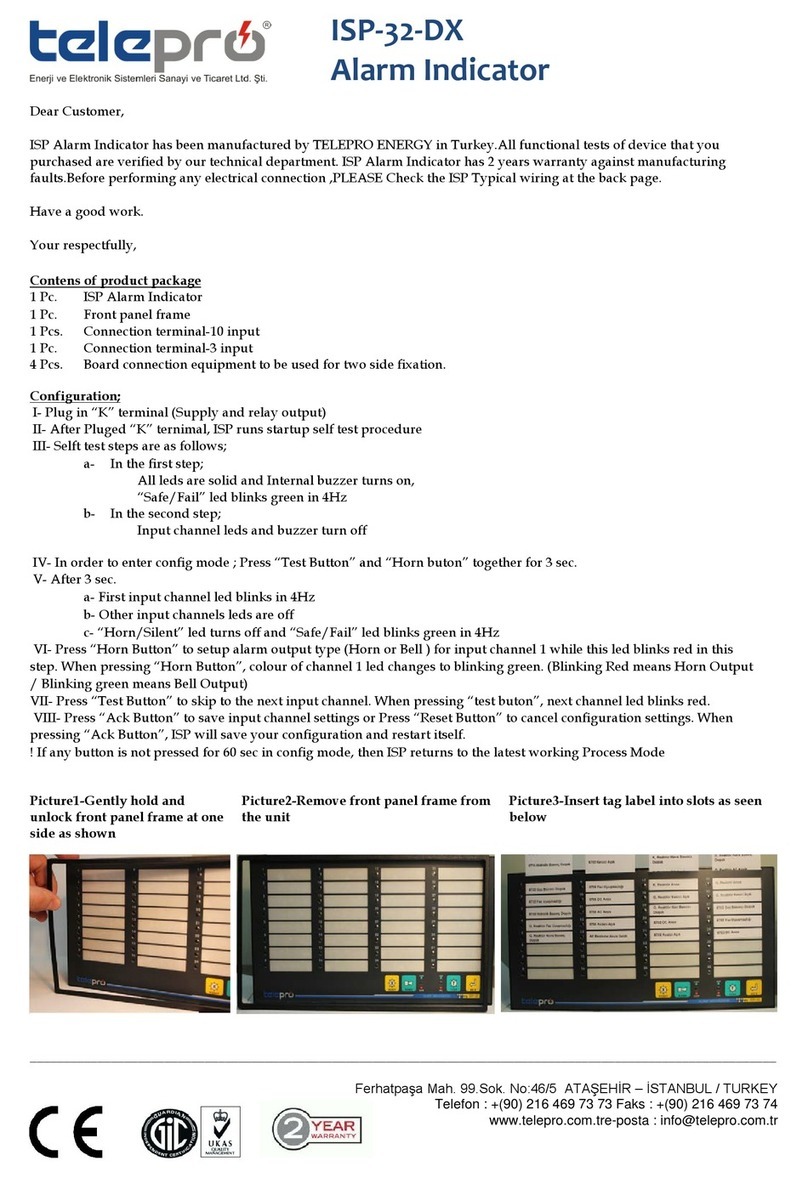
Telepro
Telepro ISP-32-DX quick start guide
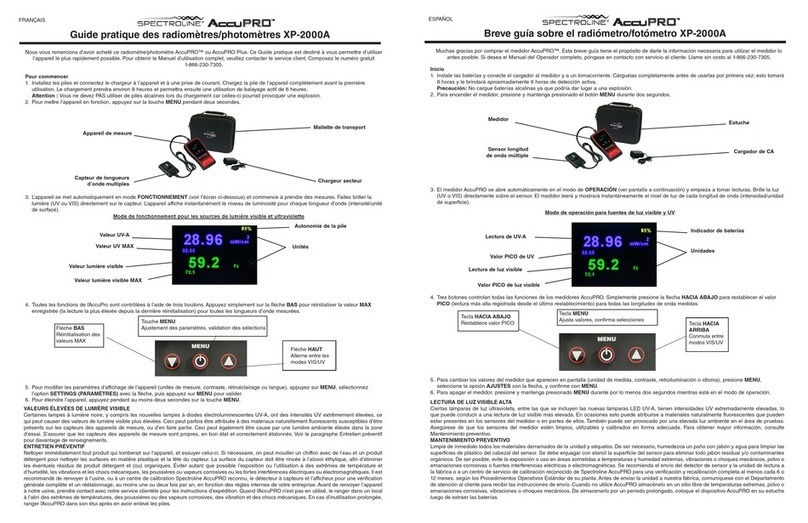
Spectro-UV
Spectro-UV Spectroline AccuPRO XP-2000A quick guide

